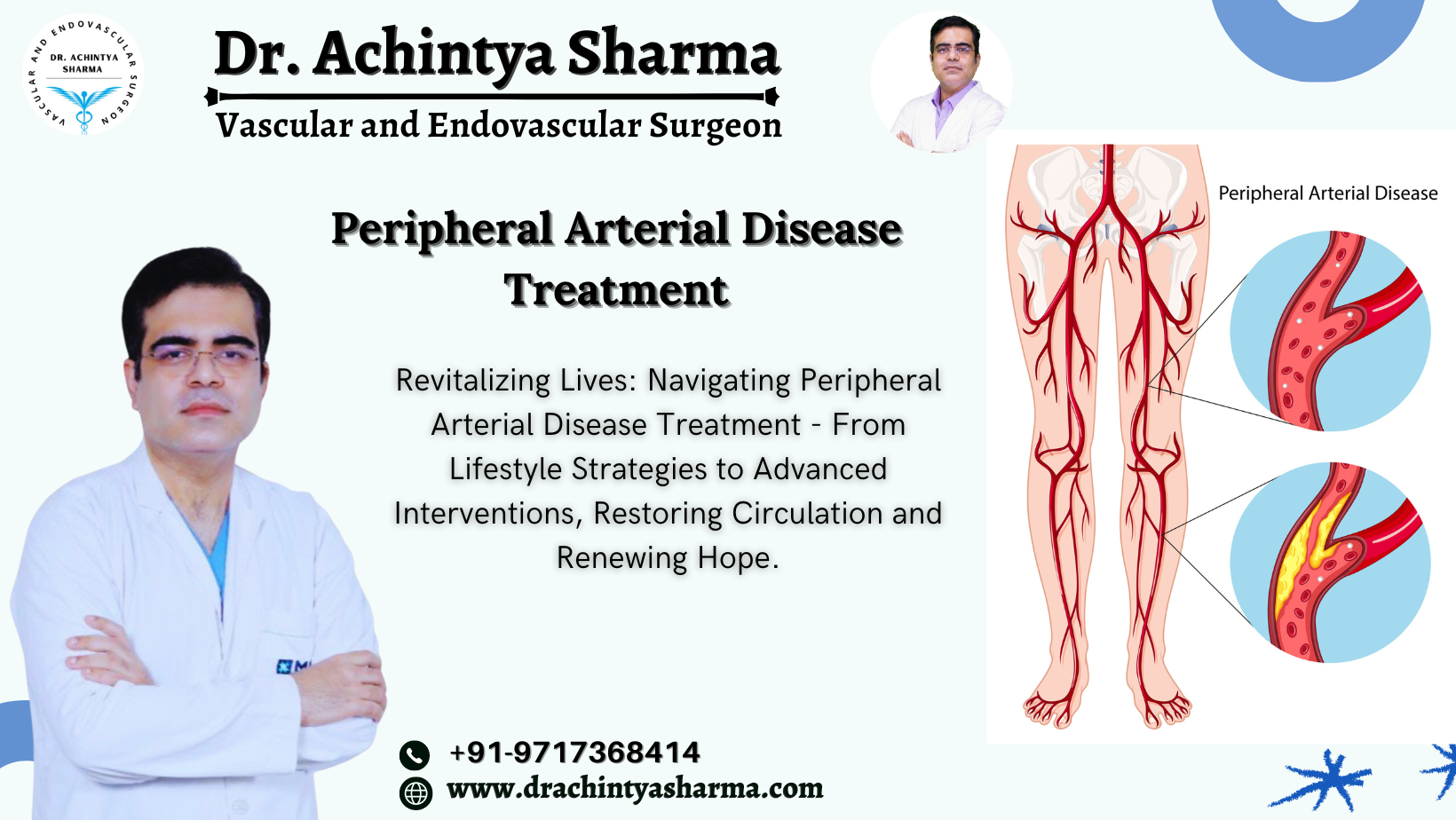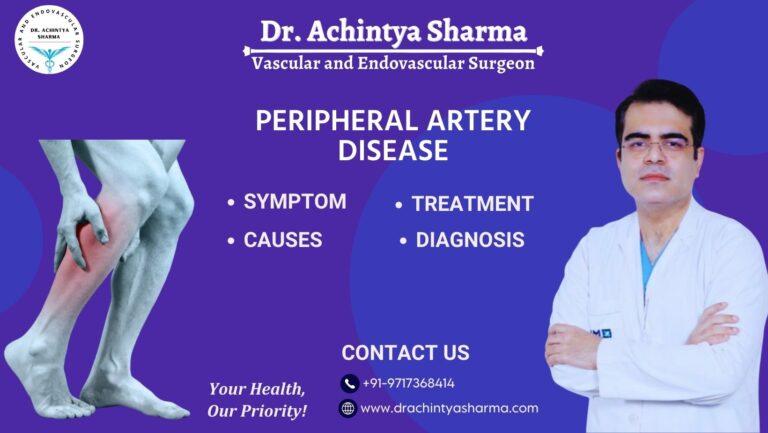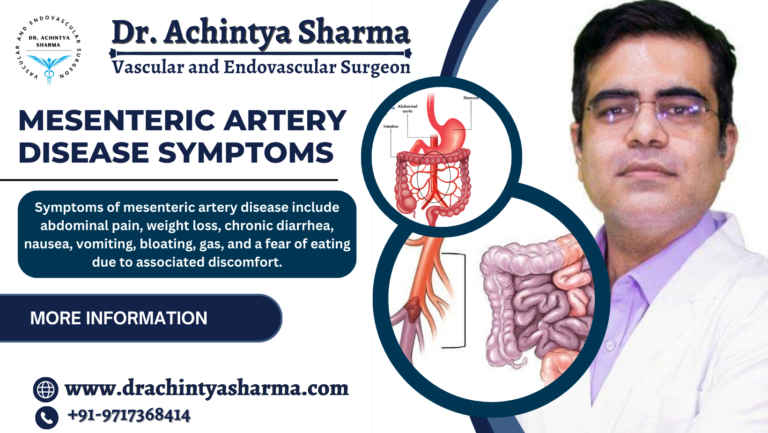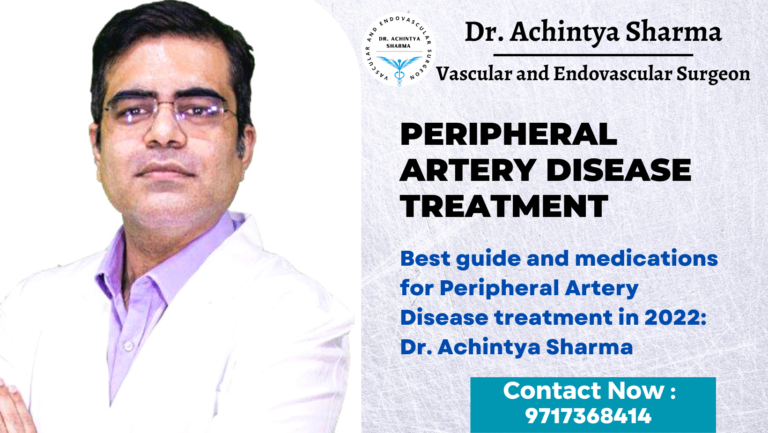Peripheral Arterial Disease (PAD) is a vascular condition that demands careful consideration and a multifaceted approach to treatment. From lifestyle adjustments to medical interventions, understanding the intricacies of PAD management is crucial for individuals grappling with this vascular challenge. In the journey of treatment, it’s crucial to grasp the nature of PAD. Often a result of atherosclerosis, where fatty deposits accumulate on artery walls, PAD can lead to reduced blood flow, causing pain, cramping, and limited mobility in the lower extremities. In this comprehensive blog, we will delve into the nuances of peripheral arterial disease treatment while also exploring the importance of finding the best vascular surgeon in Delhi. Effective treatment strategies address both the symptoms and underlying causes of this condition.
1. Lifestyle Modifications:
The foundation of PAD management lies in lifestyle adjustments. Adopting a heart-healthy diet low in saturated fats and high in fruits, vegetables, and whole grains is paramount. Furthermore, engaging in regular physical activity can improve cardiovascular health and mitigate PAD symptoms. Smoking cessation is a non-negotiable aspect, as tobacco use exacerbates arterial damage.
2. Medications for PAD:
Various medications play a pivotal role in the management of peripheral arterial disease treatment. Antiplatelet agents, such as aspirin and clopidogrel, are commonly prescribed to reduce the risk of blood clot formation. Statins, which lower cholesterol levels, contribute to preventing plaque buildup in the arteries. Additionally, medications like cilostazol may be employed to enhance walking distance and alleviate symptoms.
3. Supervised Exercise Programs:
Structured exercise programs are integral to improving the overall health and functionality of individuals with PAD. Under the guidance of healthcare professionals, patients can participate in supervised exercise routines tailored to their abilities. These programs aim to increase endurance, improve walking distance, and reduce pain associated with PAD.
4. Endovascular Interventions:
When lifestyle changes and medications prove insufficient, medical interventions may be warranted. Endovascular procedures, such as angioplasty and stenting, involve the insertion of a catheter to widen the narrowed artery and restore blood flow. These minimally invasive techniques have demonstrated success in improving circulation and alleviating symptoms.
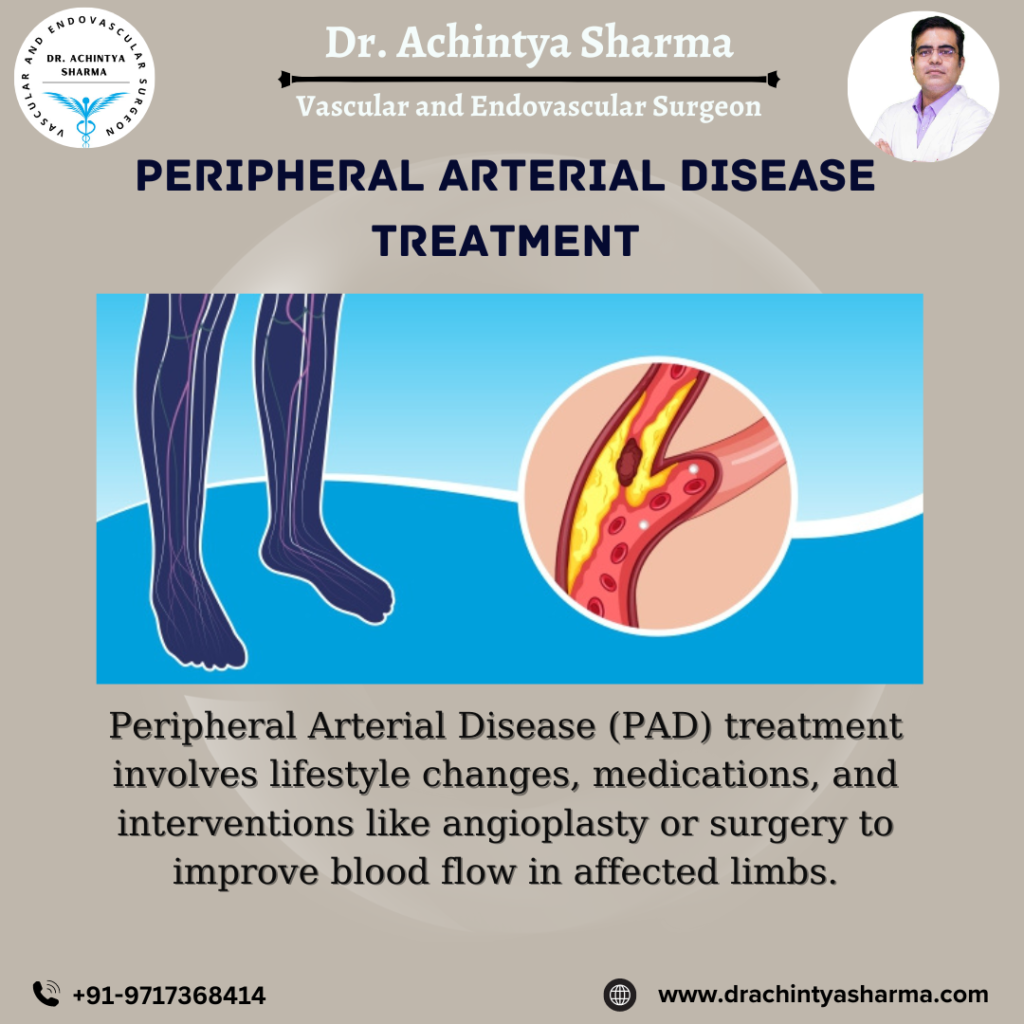
5. Surgical Options:
In more advanced cases of PAD, surgical interventions may be considered. Bypass surgery entails the creation of a graft to redirect blood flow around a blocked artery, bypassing the obstructed segment. Though more invasive, this procedure is reserved for situations where other treatments have proven ineffective, and the severity of the condition necessitates a more aggressive approach.
6. Comprehensive Cardiovascular Risk Management:
Since PAD often coexists with other cardiovascular conditions, comprehensive management of risk factors is imperative. Controlling conditions such as diabetes, hypertension, and hyperlipidemia contributes to the overall success of PAD treatment. A holistic approach ensures that the interconnected web of cardiovascular health is addressed for optimal outcomes.
7. Patient Education and Empowerment:
Empowering individuals with PAD through education is a crucial aspect of treatment. Understanding the condition, its progression, and the importance of adherence to prescribed treatments fosters active participation in one’s health journey. Well-informed patients are better equipped to make lifestyle choices that positively impact their vascular health.
Finding the Best Vascular Surgeon in Delhi:
As you navigate the landscape of PAD treatment, the expertise of a skilled vascular surgeon in Delhi, a city renowned for its medical excellence, finding the best vascular surgeon can significantly influence the success of your treatment. Look for a surgeon with a proven track record, experience in vascular procedures, and a commitment to patient-centric care. Consult reviews, seek recommendations, and prioritize a healthcare professional who understands the intricacies of peripheral arterial disease.
Conclusion
Peripheral arterial disease treatment is a nuanced and multifaceted endeavor. From lifestyle modifications and medications to exercise programs and medical interventions, the arsenal against PAD is diverse. By adopting a comprehensive approach and considering the individual needs of each patient, healthcare professionals can guide individuals with PAD toward a path of improved vascular health and enhanced overall well-being. Early detection and proactive management are key, underscoring the importance of regular medical check-ups and open communication between healthcare providers and patients.
